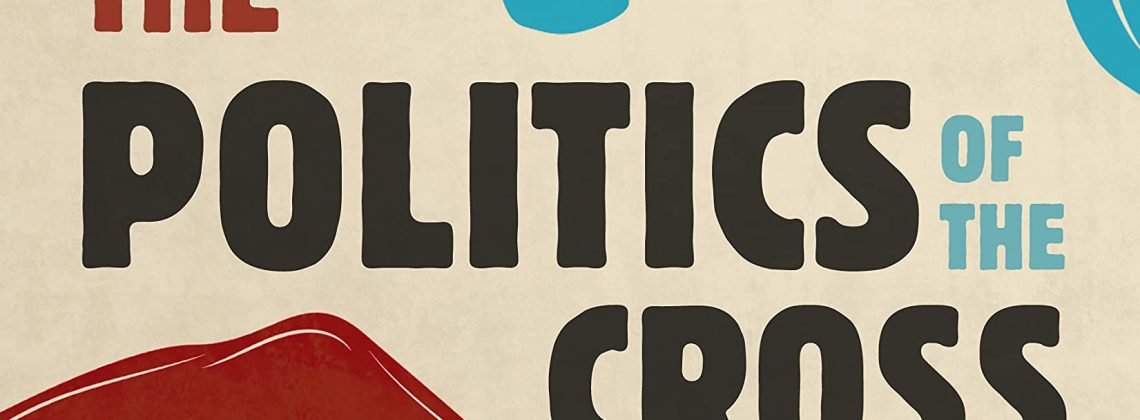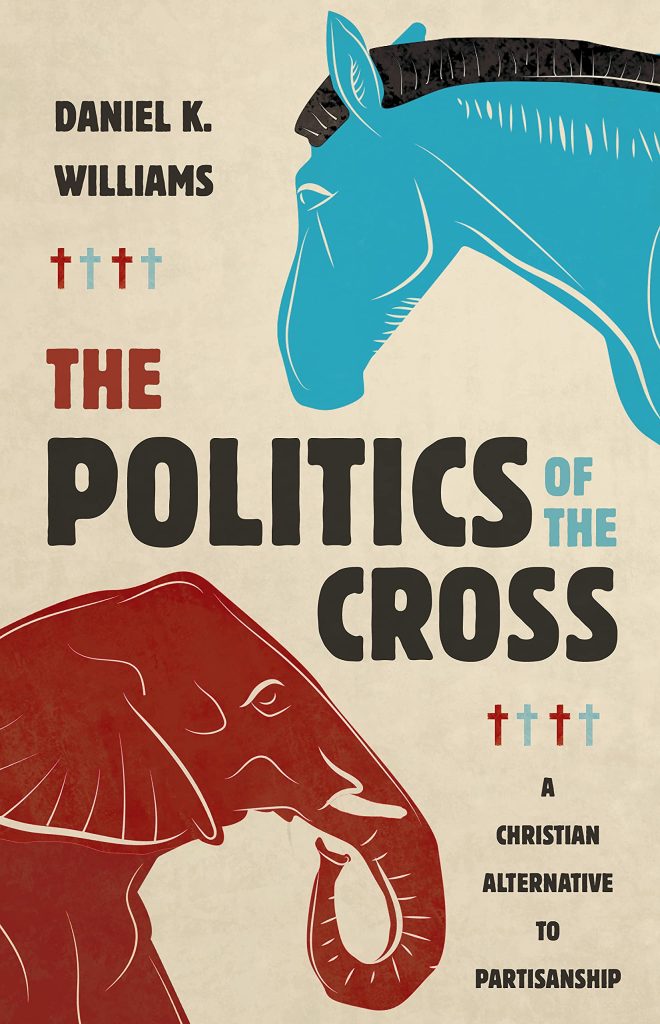

This week I traveled to Wheaton College to deliver a lecture titled “The Fragmentation of Evangelical Politics: What Happened – and How Can We Pick up the Pieces?” Here’s a brief excerpt from my presentation.
Evangelicals are divided in their political views.
For decades, white evangelicalism was closely linked with a politically conservative political culture that was forged in the early years of the Cold War, strengthened during the Nixon presidency, and solidified during the presidency of Ronald Reagan.
This political vision appealed to both Midwestern and suburban Sunbelt evangelicals. It appealed to Kuyperian Reformed Christians at Calvin, suburban seeker-sensitive megachurch attenders at Willow Creek, charismatic Christians who tuned in to watch Pat Robertson, and Southern Baptists in suburban Memphis and Atlanta.
But a recent cultural divide between the two parties that has fallen largely along educational and regional lines has fractured this political culture. The overwhelming majority of white evangelicals still support the Republican Party, but those evangelicals no longer come from the suburban Sunbelt or evangelical educational institutions of the upper Midwest in the way that they did a generation ago. Instead, even as evangelicals from rural areas of the country – especially the rural South and parts of the rural Midwest – have increased their support for the Republican Party, the evangelical institutions associated with college-educated suburban Sunbelt and Midwestern evangelicalism have become increasingly uneasy with the GOP.
One of the things that is often overlooked in the commentary on why evangelicals voted for Trump is that evangelicalism experienced a substantial demographic change between the mid-1970s and the mid-2010s, so the evangelicals who voted for Trump in 2016 were not necessarily the same people who had supported Reagan in 1980 (or whose parents had voted for Reagan).
Reagan’s greatest areas of strengths were in the suburban Sunbelt, the Midwest, and the Mountain West; they were not in the rural South. In 1980, Reagan lost the state of West Virginia by 5 percentage points, and he carried the state of Tennessee by only the slimmest of margins: less than half a percentage point.
But in 2016, Trump won West Virginia by more than 40 percentage points and Tennessee by 25 percentage points. At the same time, he spectacularly lost many of the states that Reagan had easily carried in 1980, including California, Oregon, Illinois, New Jersey, and most of the Northeast. The Trump voters in 2016 were not always the Reagan voters of 1980 or their sons and daughters; they were instead in many cases the children of rural Democrats who were belated converts to the Republican Party. And the same was true of evangelicals.
In the 1970s, the Sunbelt and the suburban Midwest (especially the Chicago suburbs and Grand Rapids) were the centers of American evangelical. Nearly all of evangelical publishers and many of the leading evangelical colleges were located in these regions.
But today the center of influence in American evangelicalism has left the Midwest (and, to a lesser degree, even the suburban Sunbelt) and moved to the rural South.
In 2018, according to the General Social Survey, only 17 percent of white Protestants who attended church at least monthly and identified their theology as either “fundamentalist” or “moderate” lived in the eastern Midwest – a decline of ten percentage points over the previous four decades.
By contrast, 60 percent of Americans who claim a born-again experience, attend church at least once a month, and take a high view of biblical authority live in the South, according to the 2018 General Social Survey. This means that any survey of evangelical political views is going to be a survey of predominantly southern views – and if we restrict the survey to white evangelicals, it’s going to reflect white southern views (and especially the views of whites in rural areas).
A multicultural, multiethnic evangelicalism is thriving in urban areas of both the South and the North, but much of that growth is leading to the expansion of Hispanic charismatic churches or nondenominational megachurches. Traditionally white denominations still remain, in many cases, mostly white – which means that the Southern Baptist Convention is facing increasing conservative pressures from white rural members who want to see the denomination take ever more extreme positions in the culture wars over race and gender.
In response, college-educated evangelicals who traditionally identified more with the Midwestern, college-educated evangelical culture of Christianity Today and Wheaton College have become increasingly alienated from what is happening among the majority of white evangelicals in other regions of the country, and some of them are beginning to abandon the evangelical label or at least consider doing so.
Because issues of racial justice, gender equality, and concerns about structural poverty – issues that a generation or two ago were more the purview of mainline Protestantism than white evangelicalism – have now become central concerns for college-educated Americans, white college-educated evangelicals have made them central concerns as well. Southern rural conservative evangelicals who have not embraced these concerns accuse these evangelicals of abandoning the Bible for so-called “woke” culture; on the other hand, evangelicals who have embraced these concerns in a spirit of repentance have claimed to be motivated primarily by the Bible’s statements about poverty and concern for the nations.
In actuality, I think it’s fair to say that all of us read the Bible through lenses that are deeply influenced by our own cultural presuppositions and that it’s sometimes very difficult for us to separate the word of the Lord from the voices of our culture. But the end result is that evangelicalism is experiencing not only a significant political fragmentation but a moral fragmentation as well, with each side believing that the other has abandoned Christian principles.
We need to remember, though, that the political debate within evangelicalism is not unique to evangelicalism; it reflects a larger regional and educational division between our nation’s parties.
The Republican Party, which for decades had been the party of the wealthier and the better-educated, became in the early 21st century the preferred choice of less-educated whites and rural Americans.
The Democratic Party, in turn, became a multicultural, multiracial party that had limited appeal among the less educated but overwhelming appeal for the college and graduate-educated, including college-educated whites.
The dividing line appeared to be a vision of cultural diversity. The Democratic Party is the preferred party for those who endorsed a vision of a culturally diverse, less economically stratified society, while the Republican Party is the party of those who believed that this vision threatened local institutions, families, and free enterprise.
Among evangelicals, the Republican Party tends to be the preferred party for those who think that secularization and the sexual revolution are greater moral threats to the nation than inequality, while the Democratic Party is the preferred choice for those who think that inequality and challenges to a multicultural vision are greater violations of Christian principles than either secularization or sexual sins. Given the fact that attitudes toward these values divide largely along regional and educational lines, it is not surprising that the partisan bifurcation among evangelicals falls along these lines as well.
After the change in the two parties’ constituencies in the early 21st century, it was only a matter of time until the Republican Party nominated a candidate who embraced the culture war issues of white rural America. When that happened, it was no surprise that white evangelicals from rural America would identify those cultural values with the cause of Christ or that college-educated evangelicals from other regions would identify those issues as antithetical to foundational principles of Christian morality.
The result is a significant fracturing of the traditional evangelical political coalition that was forged by upwardly mobile evangelicals in suburbia in a very different era.
But rather than despair about the loss of a unified evangelical movement, I think that those of us who are evangelical Christians should embrace this opportunity to be a witness for Christian principles in whatever setting we happen to find ourselves in. Rather than think of white evangelicalism as our identity if we are both white and evangelical, we should instead welcome the opportunity to draw on the political theology of Christians outside of white evangelicalism – such as the theology of African American Christians, Catholics, and Anabaptists, among others.
We should draw on those theological resources to critique the political assumptions of white evangelicalism, but should also draw on an understanding of political culture to recognize that the growing regional and educational divide among evangelicals is not a split between the virtuous and the villains; it’s rather a split between two groups who are both more influenced by their regional and educational backgrounds to a greater degree than any of us would probably want to admit.
Evangelical political culture is currently fragmenting and will likely fragment further. But this is a moment for Christian believers to apply wisdom and discernment to their own cultural environments and seek to apply the principles of Jesus to those settings, regardless of what we see other evangelicals doing on either the left or the right.
The political divisions that we see among evangelicals are not primarily the result of a theological deficiency (though that possibility needs to be considered in some cases) but rather a regional and educational polarization. Once we understand that, we’ll be able to acquire the tools we need to make Christ-honoring political choices with wisdom, grace, and courage, regardless of the choices that others who wear the evangelical label might be making.
I had hoped to attend this lecture, Dr Williams, but was not able to make it in the end. I regret missing it – and not seeing you while you were on campus. I am deeply grateful to be able to read this portion of it here – it is insightful and helpful.